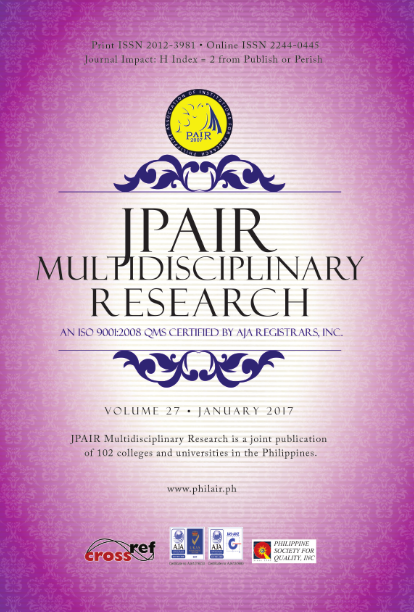A Literature Review on Women in Management in Asian Countries: Does Gender Matter?
DOI:
https://doi.org/10.7719/jpair.v27i1.465Keywords:
Social Science, glass ceiling, cultural fit, qualitative research design, narrative review, PhilippinesAbstract
The discrimination of women in the workplace is a real problem. Despite national and international organizations having made huge strides against it and implementation of United Nations Women's Treaty, apparently, nothing much has changed in the direction of eliminating it. This study aimed to find out if gender equality in terms of women representation and/or participation in the corporate world, politics, higher education management and labor workforce is practiced. Likewise, it aimed to find out the causes of inequality, if there exists. This research is essentially qualitative since it uses narrative review to assess, summarize, and interpret the results from a broad spectrum of related studies. Only 65 studies were included in the review, out of 122 studies read. The results reveal that glass ceiling and inadequate government regulations and lack of implementation of existing policies in women's leadership hinder women to forge ahead in the realm of management. This study concludes that gender inequality exists globally despite substantial national and international measures being taken against it. Breaking the glass ceiling and fine tune the mindset of the population in favor of gender equality are highly recommended.
Metrics
Downloads
References
Asian Development Bank (April 2015). Women in the Workforce: An Unmet Potential in Asia and the Pacific. Retrieved on January 16, 2017 from http://www.adb.org/publications/women-workforce-unmet-potential-asia-andpacific
Downloads
Published
Issue
Section
License
Copyright (c) 2017 Cecilia Q. Velasco

This work is licensed under a Creative Commons Attribution-NonCommercial 4.0 International License.
Open Access. This article published by JPAIR Multidisciplinary Research is licensed under a Creative Commons Attribution-Noncommercial 4.0 International (CC BY-NC 4.0). You are free to share (copy and redistribute the material in any medium or format) and adapt (remix, transform, and build upon the material). Under the following terms, you must give appropriate credit, provide a link to the license, and indicate if changes were made. You may do so in any reasonable manner, but not in any way that suggests the licensor endorses you or your use. You may not use the material for commercial purposes.

























